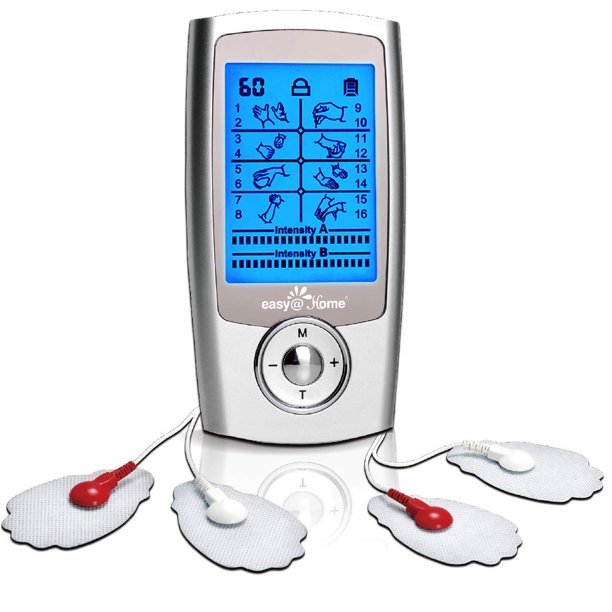tDCS stands for transcranial Direct Current Stimulation. It uses DC currents and is applied to the head. If done right, you feel only mild tingling or itching. It is used (investigationally) for a range of brain disorders such as healing after stroke or for depression, and by healthy people for things like boosting creativity.
TENS stands for Transcutaneous Electrical Nerve Stimulation. Like tDCS, TENS is a wearable non-invasive electrical stimulation device. But that’s where the similarity ends. TENS applies pulses of electrical stimulation, as opposed to the Direct Current (not pulsed) of tDCS. TENS is almost always used below the neck (for example on the back, arm or leg) while tDCS is used above the neck (on the head). TENS is used primarily to treat pain and is FDA-cleared for that reason. You can get TENS over the counter – which means without a prescription.
A few medical publications describe combing tDCS with TENS. There is at least one human trial that combined tDCS and TENS for Complex Regional Pain Syndrome. This study reported, “Our results suggest that combining tDCS and TENS could be a therapeutic strategy worth investigating further to relieve pain in chronic [Complex Regional Pain Syndrome] CRPS patients.” Another human trial combined tDCS and TENS saying “tDCS/TENS induced greater pain reduction than [just] tDCS”.
There are devices like TENS that go over the neck, but they don’t call them TENS and instead indicate they stimulate cranial nerves (which are axon branches that come from the brain to the surface of the skin). For example, Cefaly for Migraine or also what’s called “TNS” for ADHD. Another type of wearable electrical stimulation that is neither TENS nor tDCS is Cranial Electrotherapy Stimulation which is FDA cleared for anxiety and insomnia. So TENS and tDCS are specific types of technologies not to be confused with these, though they may overlap in what they actually do.
Both TENS and tDCS are drug-free, which is a plus for many people and also means they are not addictive. And both TENS and tDCS are considered safe when using proper equipment and protocols.
For headache / migraine, which is a head-based pain, both tDCS and TENS are used. tDCS is applied to the head to directly stimulate the brain to try and relieve pain. TENS can be applied to the body with the idea that ‘remote’ stimulation of nerves will impact the brain and so treat headache / migraine indirectly. Nerivio by Theranica is one such device cleared by the FDA for migraine but it’s possible generic TENS devices could work as well. Interestingly Soterix Medical provides both TENS and tDCS devices, though not apparently in one package and only the former on Amazon. We previously discussed different neuromodulation devices for pain.




